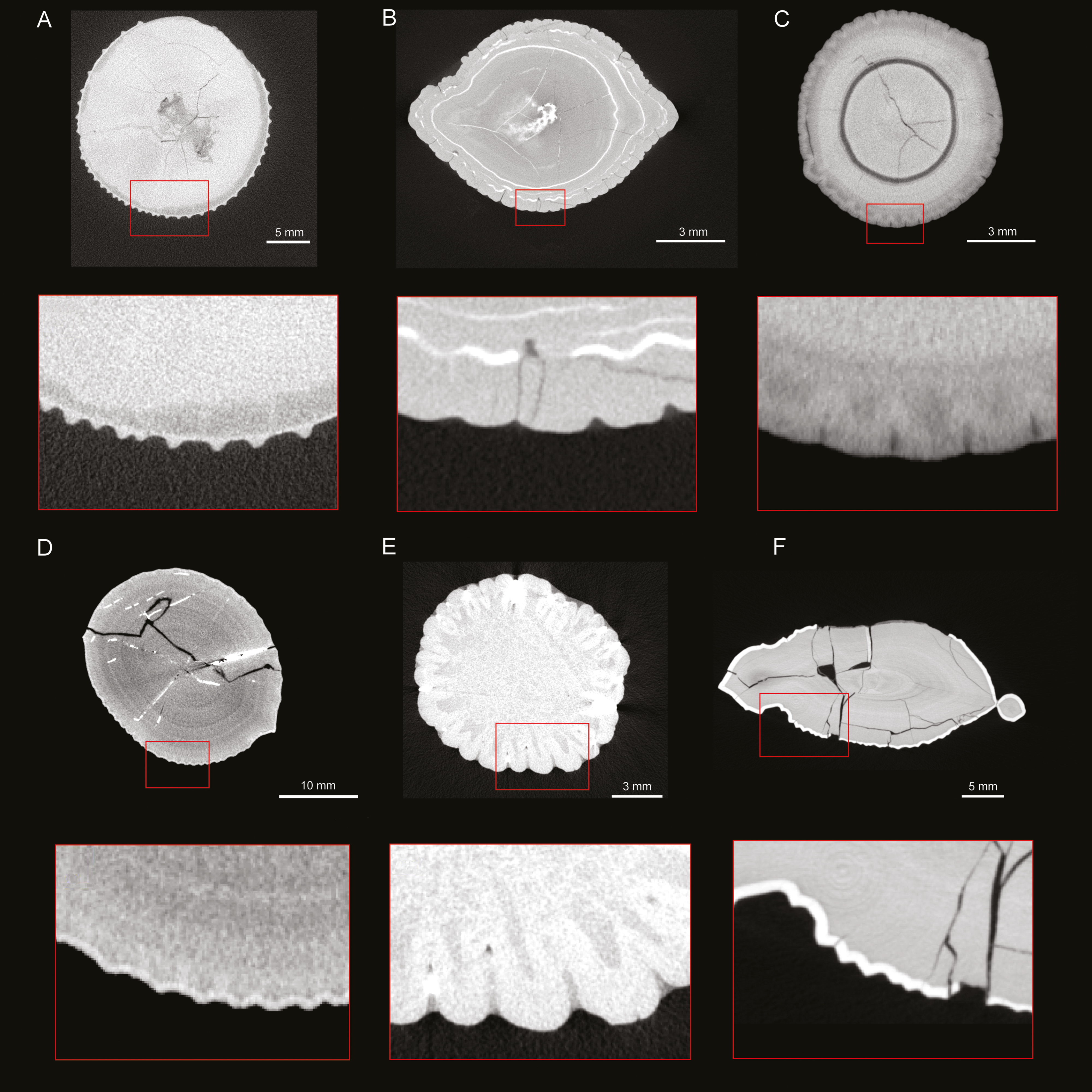Figure 4.
Cross-sections through the teeth of various aquatic mammals and reptiles, showing where the enamel–dentine junction undulates approximately parallel to the outer enamel surface (B–F) or the ridges are formed by localized thickening of enamel (A). A, Polyptycodon interruptus (USNM 16153). B, Globidens alabamensis (USNM 540758). C, Goniopholis crassidens (USNM 16115). D, Spinosaurus aegyptiacus (ROM 64659). E, Ichthyosaurus communis (ROM 01860). F, Zygorhiza kochii (USNM 11962).
